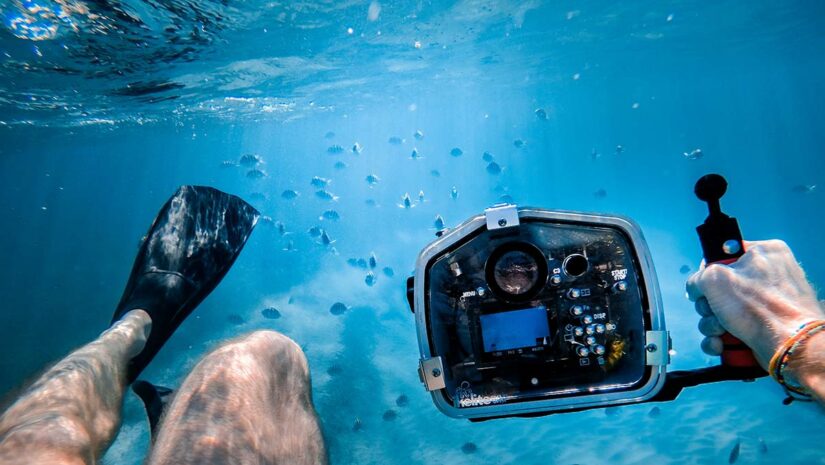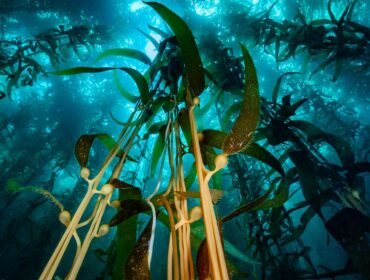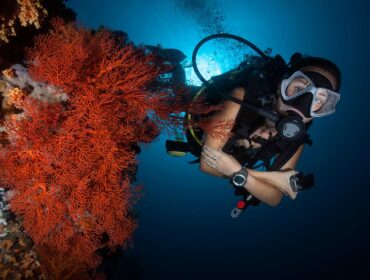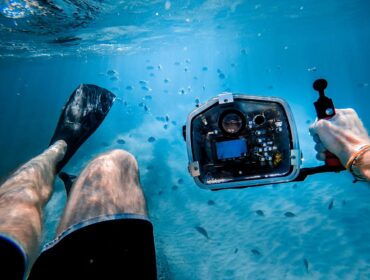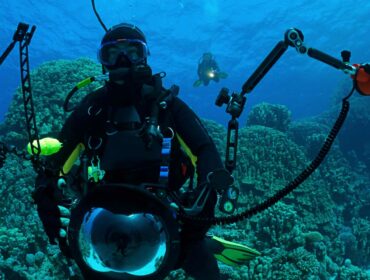Underwater photography is a fascinating hobby and for terrestrial photographers, the transition to underwater photography is marked with several difficulties and new rules that once understood can result in rewarding photographs. The first step to transitioning into the underwater realm for photography is to go back to the basic concepts and understand how light works in the medium of water.
Bending of light Underwater
Light bends as it passes from one medium to another. This bending of light is known as refraction, and can occur when light traveling through water passes through the glass and air of your underwater camera. Refraction underwater causes objects to appear approximately 25% larger/closer than they actually are causing a magnification effect. This phenomenon of bending of light underwater is important to understand as it also plays havoc to auto-focus cameras that constantly hunt for accurate focus resulting in blurry images.
The magnification effect can be rectifies easily by the diver always keeping in mind that there will be 25% magnification and compose photographs accordingly. The second problem however of focus, needs special attention. Ensure that you have a camera that always focuses at infinity or one that has a manual focus setting. Underwater cameras with an infrared autofocus assist will work underwater, but cameras that use laser rangefinders will result in focusing problems and blurry pictures.
Water Absorbs Light, Overcoming light Loss
Water acts as a filter absorbing a large portion of light traveling through it when it passes from air into it. The deeper you go, the more light is absorbed. A rough measure of light loss based on depth , is that on average, for every 10m/30′ in depth you dive there will be a loss of half the light (i.e. at 10m/33′ there will be 50% of the light found at the surface, at 20m/66” there will be only 25% as much light as there was at the surface.
The amount of light available for underwater photographers also depends on the time of the day and the position of the sun overhead. The best time for taking photos underwater is between 10am to 2 pm when the sun’s directly overhead where the surface of the water reflects the least amount of the sun’s rays from entering the water.
In the same manner a calm surface allows more light into the water than a rough one. The clarity of the water also impacts available light; the more particles floating, the less the available light.
If you plan to use natural light for your photographs, stay shallow for the best pictures. However if you plan to dive deeper, or don’t want to worry about the angle of the sunlight, invest in a good strobe unit that will allow you to overcome the effects of light loss underwater.
How to overcome Color Loss
The third problem photographers have while taking photos underwater is color loss. The effect of water on light is the same as a giant red filter that absorbs red light the deeper you go leaving only blues and greens of the spectrum visible. By 3m/10′ in depth there is no red light left from the sun light underwater, and at 25m/80’ there is only the blue part of the spectrum visible.
There are a few methods that can be used to overcome this color loss underwater, the first by using a color-correcting filter. UW filters available with different red gradients; help restore the red spectrum to photographs at different depths. This however the effectiveness of a filter is debatable topic, as filters only enhance light that is already available, and will not be able to add color to subjects taken at a depth. Filters also further block available light to the lens.
Usage of a strobe, is another way to bring back color to your photographs. Know the distance your strobe or flash unit can illuminate beforehand.
Taking photographs in shallower water will help gain maximum color to your photographs. Also getting closer to your subjects will reduce the distance that the light has to travel underwater, and increase the effectiveness of your strobe unit.

